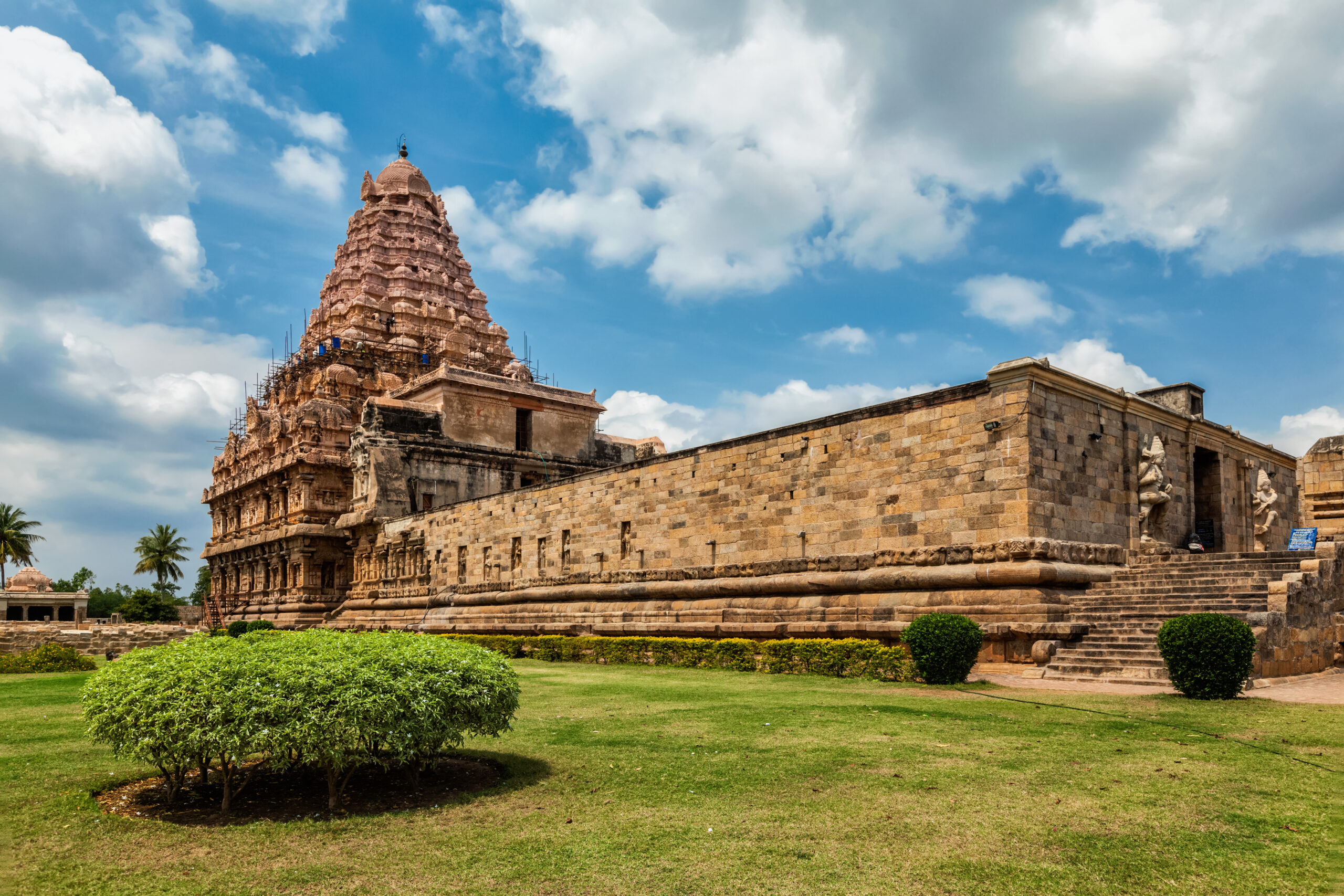Heritage of India – The Cholan architecture

Ruling for over 1,300 years, the Chola Dynasty is the longest and largest dynasty in the world. Devoting towards Lord Shiva with an impeccable loyalty to their throne and justice, the Cholas had a reign that thrived in foreign trade, military, arts, science, architecture, farming and political prowess.
Almost every face of the great Chola empire was sculpted to perfection and subject to futuristic thinking, constant upgradation, out of the box thinking and a thirst to learn new ways to make their dynasty better. While discussing the Heritage of India, one can never miss the rich and diverse socio-cultural bindings of the Chola empire, particularly the everlasting architectural wonders that were built at least a thousand years ago!

In this ongoing series, we look at the flabbergasting Cholan architectural wonders that have become the statement of India with its deep rooted cultural heritage and the fact that these aspects have made India stand out in the international crowd. Follow for more such interesting contents that celebrate the cultural heritage of India!
Vijayalaya Choleeswaram Temple, Pudukottai
One of the oldest temples ever to be constructed by the Cholas, this hidden, yet magnificent UNESCO Heritage temple was built around 1,160 years ago around 862 CE (Common Era, aka AD). This temple, just like the other Chola temples, is devoted to Lord Shiva, and was overlooked by the ancestor of the great king Raja Raja Chola, Vijayalaya Chola.
This architectural wonder is one of the earliest and first mountain cave temples carved out by the Cholas, standing tall on top of the rocky hills of Narthamalai, Pudukottai, Tamil Nadu. Constructed by what the modern architects call ‘Built-On Architecture’ in the Dravidian style of construction on a rock-cut method. The process of Built-On Architecture may sound simple and easy, and even similar to the times when we, as kids, stacked stray rocks on top of each other, except, Vijayalaya Chola used this method of stacking to make an intricately detailed and carved temple by stacking rocks on top of each other on top of a rocky hill!
The wonders and mysteries of the Vijayalaya Choleeswaram simply do not stop there. The carvings and detailings of the temple tells the stories of how scientifically and technologically advanced the Cholas were even in the early stages, where sculptures and carvings of genetically modified animals were discovered. The sculptures of a creature called ‘Yaali’ can be seen here. What makes this creature different from the others? The word Yaali is, in fact, a combination of the words ‘Yaanai’ (Elephant) and ‘Puli’(Tiger), in Tamil. In simple terms, the Yaali was believed to be a genetic modification of an Elephant and a Tiger.
This stands as a living legend of the practice of genetic modification and DNA alteration in the ancient India, as almost 3-5 different types of Yaali can be seen here, like Simha Yaali, the Lion faced Yaali and Neer Yaali, a water-based Yaali that had the face of a human!
The construct of the temple is also a mystery, as the main gopuram with the garbagraham inside is circular from the top and is continued down to maintain a cylindrical shape in the garbagraham. Typically in Dravidian style temples, the garbagraham is a square, and such cylindrical main chambers are quite rare in Hinduism.
Although there are a large number of allegations that this mysterious, yet majestic temple was built by one of the forefathers of the Pallava Dynasty, the Mutharaiyar Kings from the Mutharaiyar Dynasty, but later renovated and reconstructed around by the Chola king Vijayalaya Cholan. This, however, is certainly a controversial discussion with strong arguments towards the former and latter theories since there is no concrete evidence to who actually built this brilliant masterpiece that still stands tall after almost 1,160 mighty years, setting aside all the differences and theories.